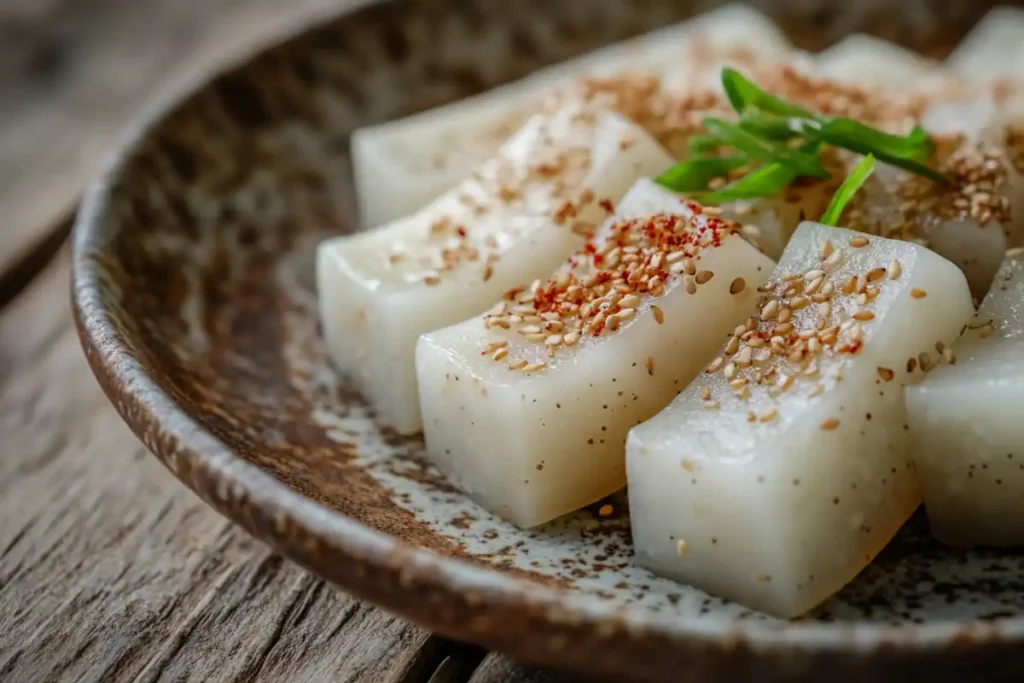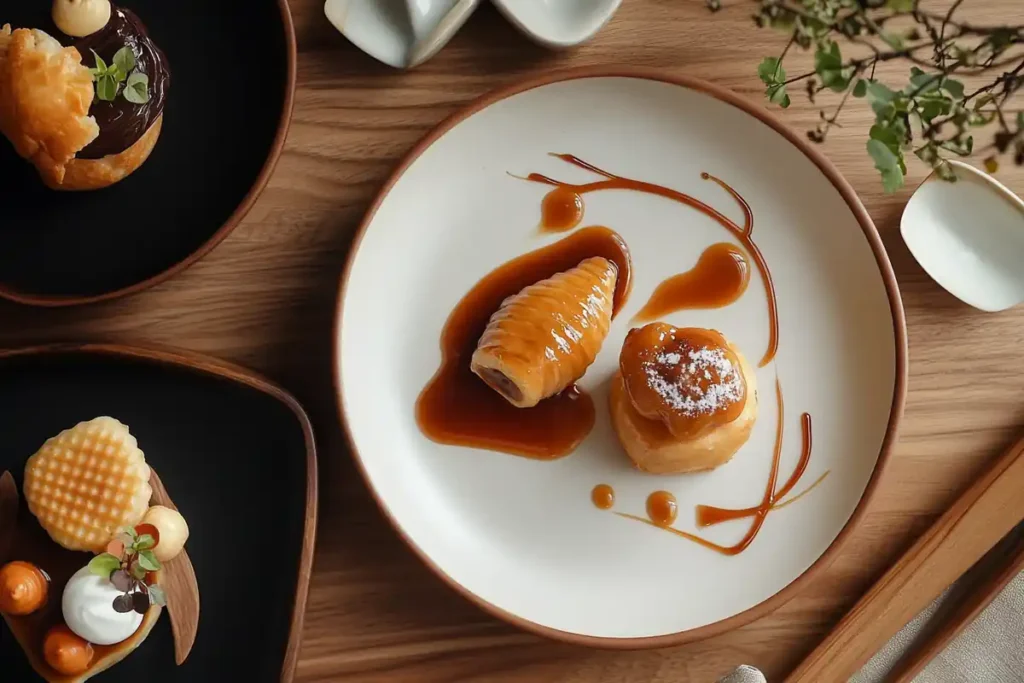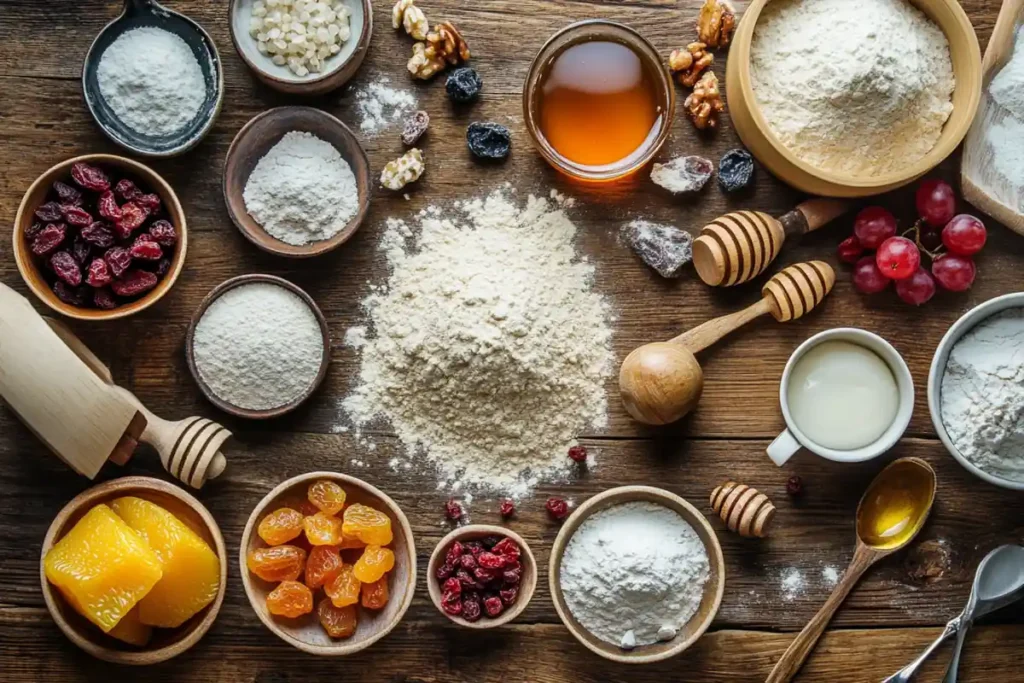Korean desserts are a delightful blend of tradition and innovation, offering something for every sweet tooth. From chewy rice cakes to refreshing shaved ice, these confections are steeped in history yet easily adapted to modern tastes. Whether you’re exploring traditional favorites like Tteok or trying creative fusion treats, there’s no shortage of delicious options. In this article, you’ll find step-by-step recipes, essential ingredients, and insider tips for crafting authentic Korean desserts at home. So, grab your apron, and let’s dive into this sweet adventure!
Introduction to Korean Dessert Recipes
The Cultural Significance of Korean Desserts
Korean desserts, or hangwa, are more than just sweet treats—they’re a reflection of Korea’s rich cultural tapestry. Traditionally served during festivals, weddings, and family gatherings, these desserts often symbolize prosperity, happiness, and unity. Every bite is imbued with meaning, making Korean sweets not only a treat for the taste buds but also for the soul.
What sets Korean dessert recipes apart is their unique approach to flavor and texture. Balancing subtle sweetness with earthy, nutty, and fruity undertones, these desserts captivate with their simplicity and elegance. Rice, beans, nuts, and seasonal fruits often play a starring role, bringing wholesome goodness to the table.
Overview of Traditional and Modern Korean Sweets
Korean desserts are a harmonious blend of the old and the new. On one hand, you have timeless staples like Songpyeon (half-moon rice cakes), Yakgwa (honey cookies), and Bingsu (shaved ice). These are cherished for their connection to Korea’s culinary heritage. On the other hand, modern Korean desserts have taken inspiration from global trends, infusing Western flavors and techniques into classics. Think of a Nutella Hotteok or an Injeolmi Bingsu. The result? A growing variety of desserts that cater to both traditionalists and adventurous palates.
As you explore this guide, you’ll uncover recipes for traditional desserts that are steeped in history, alongside modern twists that are sure to surprise. From preparation tips to serving suggestions, this article will give you everything you need to bring the magic of Korean desserts into your kitchen.
Traditional Korean Desserts

Rice-Based Treats
Rice is the backbone of many traditional Korean desserts, lending its versatility to a variety of textures and flavors. From chewy to fluffy, these rice-based treats have become beloved staples in Korean households.
Tteok (Rice Cakes)
Tteok, or rice cakes, are the quintessential Korean dessert, often enjoyed during special occasions like Lunar New Year and weddings. These chewy delights come in various shapes, sizes, and flavors, but two iconic types stand out:
- Injeolmi (Sweet Rice Cake Coated with Bean Powder)
A simple yet satisfying dessert, Injeolmi is made from steamed glutinous rice pounded into a chewy consistency and then coated with roasted soybean powder. Its nutty, slightly sweet flavor is perfect for a light treat or a tea-time snack.
Tip: Serve Injeolmi slightly chilled for a firmer texture, and pair it with green tea to balance the sweetness. - Songpyeon (Half-Moon Shaped Rice Cake)
Songpyeon is a must-have during Chuseok (Korean Thanksgiving). These half-moon-shaped rice cakes are filled with sweetened sesame seeds, red bean paste, or chestnut puree. They are steamed with pine needles, which impart a fresh, earthy aroma.
Tip: Add natural dyes from mugwort or pumpkin to make colorful Songpyeon that are as eye-catching as they are delicious.
Bingsu (Shaved Ice Desserts)
Shaved ice desserts are not just refreshing; they’re a cultural phenomenon in Korea. They date back to the Joseon Dynasty, where crushed ice was topped with sweetened fruits.
- Patbingsu (Red Bean Shaved Ice)
Patbingsu is a traditional favorite made with shaved ice, sweetened red beans, condensed milk, and mochi. It’s a delightful mix of textures, from the creamy red bean paste to the crunch of the ice.
Tip: For a modern twist, add fruit toppings like strawberries or mango for a burst of color and flavor. - Injeolmi Bingsu (Shaved Ice with Rice Cakes)
This variation uses chewy Injeolmi rice cakes and roasted soybean powder as toppings. It’s a favorite among those who love nutty and earthy flavors.
Tip: Use finely shaved ice for the creamiest texture, and drizzle honey on top for added sweetness.
Fried and Baked Sweets
Not all Korean desserts are steamed or cold—some are fried or baked to crispy perfection.
Hotteok (Sweet Pancakes)
Hotteok, a popular street food, is a fried pancake filled with a mixture of brown sugar, cinnamon, and nuts. As it cooks, the sugar caramelizes into a gooey center, making it an irresistible winter treat.
Tip: Fry on medium heat to ensure the sugar filling doesn’t burn while the pancake crisps up beautifully.
Yakgwa (Honey Cookies)
These deep-fried honey cookies are a traditional dessert with roots in Korean royal court cuisine. Made with wheat flour, sesame oil, and honey, Yakgwa is rich, fragrant, and subtly sweet.
Tip: Dip the cookies in a honey-ginger syrup after frying to enhance their flavor and keep them moist.
Fruit and Nut-Based Confections
Korean desserts often highlight the natural sweetness of fruits and nuts, creating healthy yet indulgent treats.
Yaksik (Sweet Rice with Dried Fruits and Nuts)
Yaksik is a sticky rice dish mixed with chestnuts, jujubes, pine nuts, and a syrup made from honey and soy sauce. Traditionally served during ancestral rites, it’s a dessert that feels both festive and comforting.
Tip: Use a rice cooker to simplify the preparation process while maintaining the dish’s authentic flavor.
Yul-lan (Chestnut Cookies)
Yul-lan is a simple yet elegant dessert made from mashed chestnuts shaped into bite-sized balls and coated in powdered sugar. Its delicate sweetness and melt-in-your-mouth texture make it a popular choice for tea ceremonies.
Tip: Add a touch of vanilla extract to enhance the natural sweetness of the chestnuts.
Modern Twists on Korean Desserts

Korean desserts have evolved over time, blending traditional elements with global influences to create unique fusion treats. These modern twists offer bold flavors and creative presentations, making them a hit with younger generations and dessert lovers worldwide.
Fusion Flavors
Modern Korean desserts often feature unexpected combinations of traditional ingredients and contemporary tastes, resulting in innovative delights.
Gochujang Caramel Cookies
Spicy, sweet, and slightly savory, Gochujang Caramel Cookies are a bold take on the classic dessert. The Korean chili paste (gochujang) adds a hint of heat to the buttery cookie dough, while the caramel drizzle balances it with a smooth sweetness.
Tip: Sprinkle a pinch of sea salt on top of the cookies after baking for a gourmet finish.
Nutella Hotteok
A modern upgrade to the beloved street food, Nutella Hotteok swaps the traditional brown sugar filling for creamy Nutella. As the pancake cooks, the Nutella melts into a decadent, gooey center that’s hard to resist.
Tip: Serve with a dollop of whipped cream and crushed hazelnuts for an Instagram-worthy dessert.
Western Influences
Global flavors and techniques have significantly influenced Korean dessert recipes, introducing new textures and tastes while retaining a Korean flair.
Korean Custard Bread (Cream-ppang)
Soft, pillowy bread filled with a rich custard cream, Cream-ppang has become a café favorite in Korea. Its mild sweetness pairs perfectly with coffee, making it a popular afternoon treat.
Tip: Brush the bread with a thin layer of egg wash before baking for a golden, shiny finish.
Bungeoppang (Fish-Shaped Pastry)
Traditionally filled with red bean paste, Bungeoppang has embraced a modern makeover with creative fillings like custard, chocolate, or even matcha cream. The playful fish shape adds a whimsical touch to this warm, crispy pastry.
Tip: Use a specialized Bungeoppang mold for perfectly shaped fish pastries every time.
Creative Takes on Bingsu
The iconic Korean shaved ice dessert has also undergone exciting transformations in modern times.
Tiramisu Bingsu
Combining the creamy richness of tiramisu with the refreshing qualities of bingsu, this dessert layers finely shaved ice with espresso syrup, mascarpone cream, and a dusting of cocoa powder. It’s a sophisticated treat for coffee lovers.
Tip: Add a sprinkle of chocolate shavings or a ladyfinger biscuit for an authentic tiramisu experience.
Matcha and Oreo Bingsu
A fusion of Japanese matcha and the ever-popular Oreo cookie, this bingsu flavor is a hit among dessert enthusiasts. The earthy bitterness of matcha pairs beautifully with the sweetness of crushed Oreos and condensed milk.
Tip: Top with a scoop of vanilla ice cream for an extra indulgent touch.
Ingredients and Techniques in Korean Dessert Making

The beauty of Korean dessert recipes lies not just in their flavors but in the ingredients and techniques that bring them to life. Understanding these elements is key to crafting authentic and delicious Korean sweets at home.
Essential Ingredients
Korean desserts rely on a handful of staple ingredients, each playing a crucial role in achieving their distinct taste and texture.
Sweet Rice Flour
Sweet rice flour, also known as glutinous rice flour, is the foundation of many Korean desserts like Tteok and Injeolmi. Its sticky texture gives these treats their characteristic chewiness.
Tip: For the best results, use freshly ground sweet rice flour, as it absorbs water more consistently.
Red Bean Paste
Sweetened red bean paste (pat) is a cornerstone of Korean desserts, adding a smooth, earthy sweetness to dishes like Patbingsu and Bungeoppang. Whether homemade or store-bought, it’s an essential pantry item for Korean dessert enthusiasts.
Tip: For a less sweet version, mix in a pinch of salt to balance the flavors.
Honey and Syrup
Honey and grain syrup are commonly used to sweeten desserts like Yakgwa and Yaksik. They provide a rich, floral sweetness that complements the natural flavors of other ingredients.
Tip: Use Korean grain syrup (jocheong) for an authentic touch.
Sesame and Nuts
Sesame seeds, chestnuts, and pine nuts are frequently incorporated into Korean sweets for added crunch and depth of flavor. Their subtle nuttiness enhances desserts like Yul-lan and Songpyeon.
Tip: Toast sesame seeds lightly before use to amplify their aroma.
Traditional Cooking Methods
The techniques used to prepare Korean desserts are often as fascinating as the recipes themselves. They reflect a deep respect for tradition while offering opportunities for creativity.
Steaming
Steaming is the preferred method for making rice-based treats like Songpyeon and Yaksik. It ensures the desserts retain their softness and delicate flavors.
Tip: Line the steamer with parchment paper or pine needles to prevent sticking and add a subtle fragrance.
Frying
Deep-frying is commonly used for desserts like Hotteok and Yakgwa. The high heat caramelizes sugars and crisps up the outer layers, creating a satisfying texture.
Tip: Maintain a consistent oil temperature to ensure even frying without burning.
Baking
Though less common, baking is increasingly used in modern Korean desserts like Custard Bread and fusion pastries. It offers a convenient and healthier alternative to frying.
Tip: Preheat your oven to the correct temperature to avoid uneven cooking.
Tips for Success
- Use high-quality, fresh ingredients for the best flavors.
- Measure carefully, especially with rice flour and syrups, to achieve the ideal texture.
- Experiment with traditional recipes by incorporating modern twists or seasonal ingredients.
Frequently Asked Questions (FAQs)
Korean desserts are gaining global popularity, yet many people have questions about their origins, ingredients, and cultural significance. Here are answers to some commonly asked questions about Korean dessert recipes.
What do Koreans eat for sweets?
Koreans enjoy a wide variety of sweets that cater to different tastes and occasions. Traditional desserts like Tteok (rice cakes), Yakgwa (honey cookies), and Patbingsu (red bean shaved ice) are popular for their rich history and unique flavors. Modern favorites such as Nutella Hotteok and Custard Bread add a fusion twist to the dessert scene. Fresh fruits, like persimmons and melons, are also widely enjoyed for their natural sweetness.
What is a traditional Korean sweet snack?
A quintessential traditional Korean sweet snack is Hotteok—sweet pancakes filled with a mix of brown sugar, cinnamon, and nuts. These are a common street food, especially in winter, offering a warm and gooey center wrapped in a crispy fried exterior. Another popular snack is Yakgwa, honey cookies that are deep-fried and soaked in a syrup made of honey and ginger, making them delightfully rich and aromatic.
What is mochi called in Korea?
In Korea, the equivalent of Japanese mochi is Tteok. While both are made from glutinous rice, Tteok comes in a wide variety of forms, textures, and flavors. For example, Injeolmi is a chewy rice cake coated in roasted soybean powder, while Songpyeon is filled with sweetened sesame seeds or red bean paste and steamed with pine needles. These rice cakes are a staple of Korean culture, enjoyed during celebrations and rituals.
What is the most popular dessert in Korea?
Arguably, the most popular dessert in Korea is Bingsu, especially during the hot summer months. This shaved ice dessert comes in numerous variations, but the traditional Patbingsu—topped with sweet red beans, condensed milk, and mochi—is a perennial favorite. Modern versions like Tiramisu Bingsu and Matcha Oreo Bingsu have added new flavors to its ever-growing appeal.
Print
Korean Sweet Rice Cake (Yaksik)
- Total Time: 1 hour 20 minutes
- Yield: 8 servings
Description
Yaksik, a traditional Korean dessert, is a sweet and sticky rice cake infused with honey, soy sauce, and sesame oil. This flavorful treat is enriched with dried fruits and nuts, creating a delightful balance of chewy and crunchy textures. Often served during festive occasions, Yaksik is both satisfying and healthy, thanks to its natural sweetness and nutrient-rich ingredients. Perfect for dessert or a midday snack!
Ingredients
- Sweet Rice (Glutinous Rice): 2 cups, rinsed and soaked for 2 hours
- Water: 2 cups
- Honey: 4 tbsp
- Dark Soy Sauce: 2 tbsp
- Sesame Oil: 2 tbsp
- Brown Sugar: 3 tbsp
- Cinnamon Powder: 1 tsp
- Chestnuts (peeled): ½ cup
- Jujubes (Korean dried dates): ½ cup, pitted and sliced
- Raisins: ¼ cup
- Pine Nuts: 2 tbsp
- Salt: 1 pinch
Instructions
-
Prepare the Rice:
- Drain the soaked sweet rice and steam it in a rice cooker or steamer with 2 cups of water until fully cooked, about 25-30 minutes.
-
Make the Sauce:
- In a small saucepan, combine honey, soy sauce, sesame oil, brown sugar, cinnamon powder, and salt. Heat over low heat and stir until the sugar dissolves. Remove from heat and set aside.
-
Combine Ingredients:
- In a large mixing bowl, gently combine the cooked rice with the sauce. Mix thoroughly to coat every grain evenly.
-
Add the Toppings:
- Fold in the chestnuts, jujubes, raisins, and pine nuts, ensuring an even distribution throughout the rice mixture.
-
Shape and Set:
- Line a square or rectangular pan with parchment paper. Transfer the rice mixture into the pan, pressing it firmly to compact the cake.
-
Steam Again:
- Place the filled pan in a steamer and steam for an additional 20 minutes. This step helps the flavors meld and ensures a cohesive texture.
-
Cool and Serve:
- Allow the rice cake to cool completely in the pan before slicing it into squares or rectangles. Serve at room temperature.
Notes
- Yaksik can be stored in an airtight container at room temperature for up to 2 days or in the refrigerator for up to a week.
- For extra flavor, sprinkle lightly toasted sesame seeds on top before serving.
- Substitute dried fruits and nuts to your preference, such as apricots or almonds.
- Prep Time: 30 minutes
- Cook Time: 50 minutes
- Category: Dessert
- Method: Steaming
- Cuisine: Korean
Nutrition
- Serving Size: 1 slice
- Calories: 180 kcal
- Sugar: 12 g
- Sodium: 70 mg
- Fat: 4 g
- Saturated Fat: 0.5 g
- Unsaturated Fat: 3.5 g
- Trans Fat: 0 g
- Carbohydrates: 34 g
- Fiber: 2 g
- Protein: 3 g
- Cholesterol: 0 mg
Keywords: Korean dessert, Yaksik, sweet rice cake, traditional Korean recipe, healthy dessert

